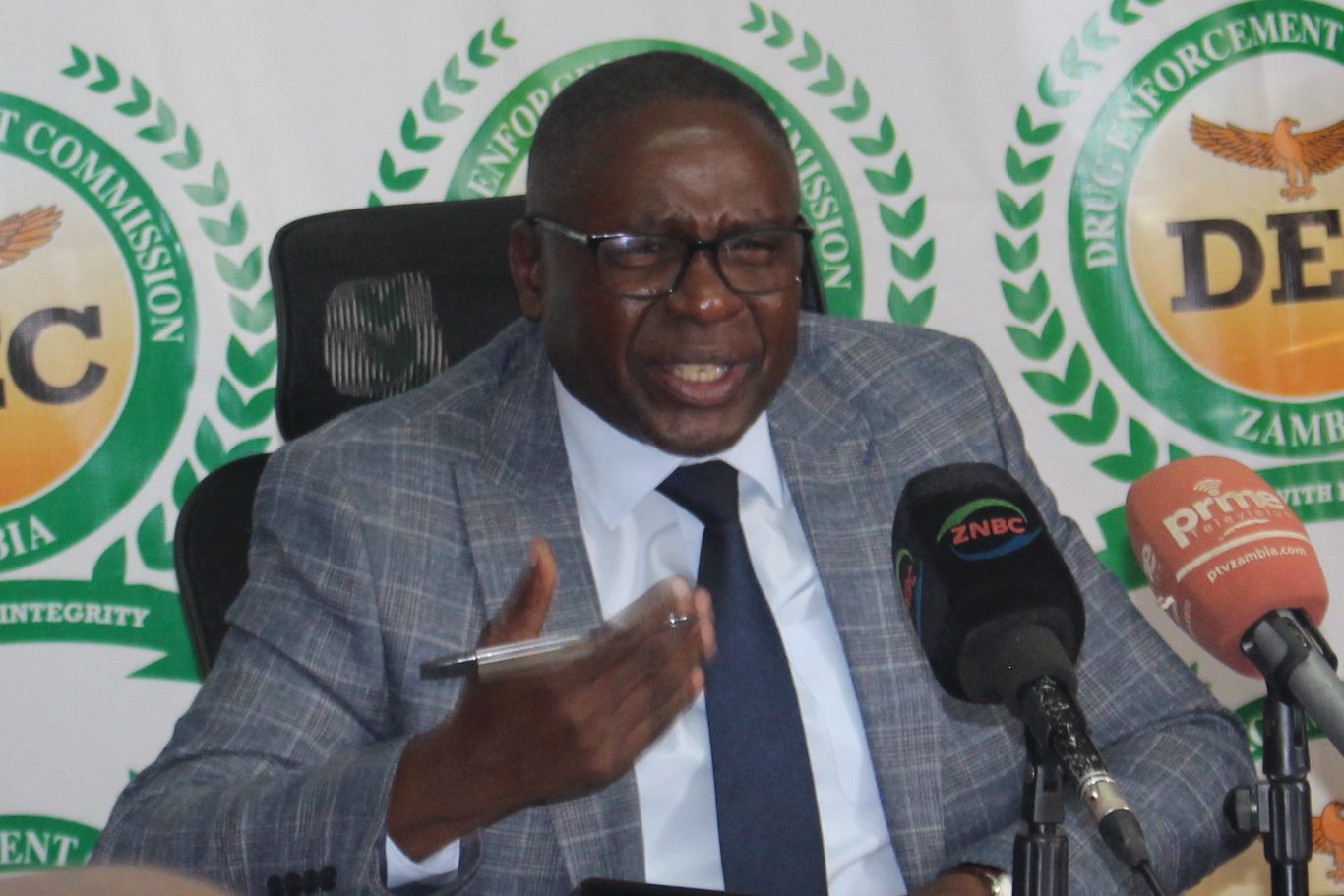Historical Background of the DEC
The problem of drug trafficking and money laundering in Zambia has its foundation in the historical, geographical settings and political economy.
Zambia is a landlocked country situated in the central part of Southern Africa. It is one of the Sub-Saharan countries which is highly urbanised and has a population of about 13.5 million people. The economy in Zambia has been copper based for many years in history and has accounted for a significant portion of the Gross Domestic Product (GDP). However, the Zambian copper industry has not performed very well starting from the 1980s as a result of the decline in world copper prices. From Zambia’s independence in 1964, the country relied on socialist type of economic management which could not sustain private sector investment.
Therefore, the events of the 1980 saw a rise in the illegal importation of stolen motor vehicles from South Africa for exchange with mandrax (methaqualone) in Zambia and this led the former President Dr Kenneth Kaunda to institute the largest Police investigation code-named operation JUJU which arrested sixty eight suspects who were involved in drug trafficking and money laundering. And with the economy collapsing, a parallel market in illicit foreign exchange transactions had flourished and witnessed the emergence of illegal foreign currency transactions coupled with drug trafficking and money laundering. The centrality of the Lusaka International Airport made Zambia accessible to all her neighbours by air and road.
Consequently, this led to the constitution of the Chaila Tribunal under the Inquiries Act to investigate certain individuals’ alleged dealings in drugs and to chart the way forward since there was no specific law to deal with cases of mandrax and money laundering. One of the recommendations of the Chaila Report was the setting up of a specialised Unit to investigate and prosecute drug related offences.
A special team which was known as Special Investigation Team on Economy and Trade (SITET) was constituted to investigate those offences and many offenders only paid Admission of Guilt fines for Foreign Exchange Control Violations (FECV). The pattern of drug trafficking and money laundering were threefold:
- Traffickers would transport consignments of mandrax to South Africa and exchange these drugs with second hand vehicles which were brought to Lusaka for re-sale on the black market.
- The other level was to exchange drugs with motor vehicle spare parts which were then brought to Lusaka for sale in motor vehicle garages.
- The third pattern was to exchange narcotic drugs with the South African Rand or Botswana Pula or American Dollars. The monies were then brought into Zambia and used in the construction or purchase of expensive residential houses or for the set-up of business enterprises. Some drug syndicate groups had been able to set up fish shops and motor vehicle garages.
Therefore, the government then swung into action to enact a new piece of legislation called Dangerous Drugs (Forfeiture of Property) Act No. 7 of 1989. Section 33 of this Act empowered the President to establish a special organisation to deal with matters related to drug activities. Consequently, on 21st July, 1989, the Drug Enforcement Commission was created by Statutory Instrument No. 87 of 1989 and became operational on 1st January, 1990.
Although Act No. 7 of 1989 was meant to deliver the much expected crushing blow to drug barons, traffickers and abusers, it became clear that this law was inadequate to completely deal with the real situation on the ground. Act No. 7 of 1989 lost its efficacy because of technicalities such as omission of the offence of ‘possession’ of drugs in the schedule to the Act in accordance with Section 2 (2).
The Drug laws were again placed on the drafting board. Public Seminars were conducted and consultations were made with both regional and international agencies. This process led to the enactment of the Narcotic Drugs and Psychotropic Substances Act No. 37 of 1993 (Now Cap 96 of the Laws of Zambia under Volume 7). This Law repealed and replaced Act No. 7 of 1989, and it came into effect on the 1st of November, 1993 through Statutory Instrument No. 139 of 1993 ( Justice Phiri, 2000).
In 2001, the Drug Enforcement Commission was given additional responsibility through the enactment of the Prohibition and Prevention of Money Laundering Act 14 of 2001. Although the offence of money laundering was provided for under the Narcotic Drugs and Psychotropic Substances Act, Cap 96, section 22 of the Laws of Zambia, the Act itself did not define what Money Laundering actually meant, and the elements of the offence were not clearly defined. This meant that the law against the offence of money laundering under section 22 of Cap 96 was ineffective and thus led to unsuccessful investigations and prosecution.
Therefore, on 8th November, 2001, the Prohibition and Prevention of Money Laundering Act No. 14 of 2001 became law through Statutory Instrument No. 121 of 2001.

